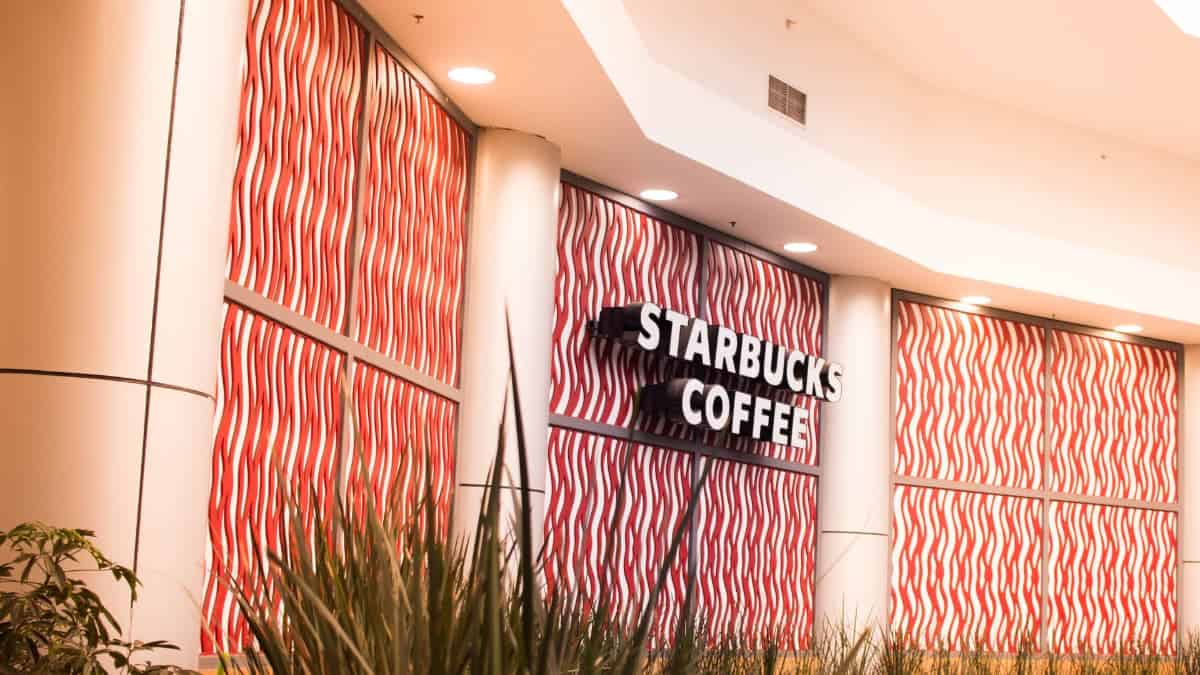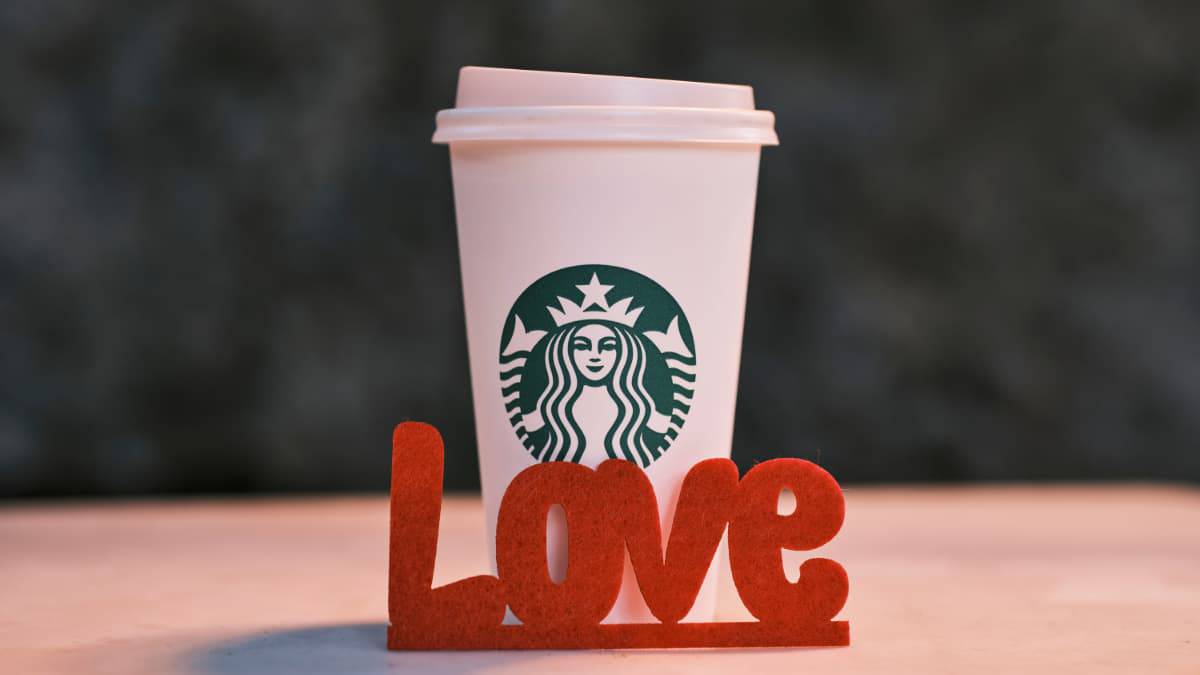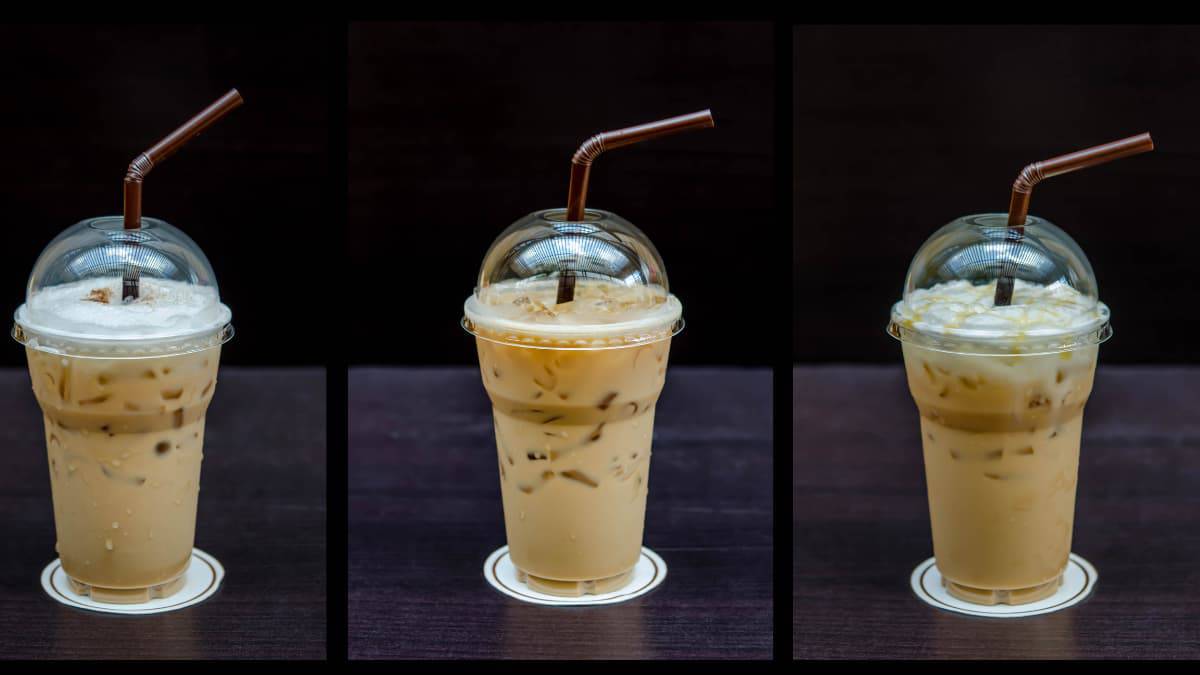Starbucks Caffeine Content: Explained By A Ex-Branch Manager
Starbucks is, by a long shot, the world’s leading coffee chain, with over a whopping 35,000 stores around the world. If you’ve ever sipped one of their ‘handcrafted creations,’ you can probably see why.
Many of their drinks taste like liquid desserts. With all that sugar, it can be easy to forget your drink even has coffee in it! So just how much caffeine is in that Starbucks coffee anyway?
As a former Starbucks manager, I can help you understand Starbucks caffeine content across their menu. Let’s get into all the details!

Key Takeaways: How Much Caffeine Is in Starbucks Coffee?
- Brewed Coffee – Veranda Blend Blonde Roast Venti Size contains the most caffeine at 475 mg per cup while the grande contains 360 mg of caffeine.
- Creme Frappuccinos contain no caffeine.
- The amount of caffeine content depends on drink size, beverage type, and coffee roast.
- Several tea-based drinks also contain caffeine.
Caffeine in Starbucks Drinks
Here’s the thing about Starbucks drinks. If you want to determine their exact caffeine content, you have to factor in quite a few things.
The most obvious factor is drink size. The bigger you get, the more caffeine there is.
Most Starbucks drinks come in four sizes: Short (8 oz), Tall (12 oz), Grande (16 oz), or Venti (20 oz hot, 24 oz cold).

You can also get some iced drinks in Trenta, the chain’s extra-large cup size.
Besides the cup size, you’ve also got to consider what kind of drink you’re getting. Brew method impacts caffeine levels. So different styles of coffee will have different amounts of caffeine.
To make it easier to understand, let’s look at how much caffeine some of the most popular drinks at Starbucks contain.
Note: I’ve based all the caffeine content measurements on the Grande cup size. (Espresso shots are the one exception.) So we’re looking at mg of caffeine per 16 oz.
The Classics
There are a few drinks that appear on Starbucks menus all across the world: brewed coffee, espresso, and espresso drinks.
And trust me, as someone who’s visited Starbucks in over 20 countries, I’ve got the menu down pat.
Brewed Coffee
There are three main types of coffee roast in Starbucks: dark, medium, and blonde (light). The longer the beans are roasted, the darker they become. The darker the roast, the less caffeine.
- Decaf Brewed Coffee (Pike Place): 15 mg
- Brewed Coffee (Dark Roast): 260 mg
- Brewed Coffee (Medium Roast): 310 mg
- Brewed Coffee (Blonde Roast): 360 mg
- Caffe Misto: 150 mg
The science behind how roasting impacts caffeine content per coffee bean can get confusing.
But when we’re looking exclusively at Starbucks brewed coffee, we can keep it simple. Starbucks dark roast has less caffeine than their medium roast. And the medium roast has less caffeine than the blonde roast.
If you want a cup of coffee without as much caffeine, you can always opt for a decaf brewed coffee. The Starbucks standard decaf (Pike Place blend) contains just 15 mg of caffeine.
The Caffe Misto is another brewed coffee classic. Although easily confused with espresso drinks, it does not contain espresso. Instead, it combines half-steamed milk and half-brewed coffee. In France, it’s more commonly known as café au lait.
Espresso
Espresso is the basis for many of Starbucks’ most popular beverages. A standard single shot of Starbucks espresso contains 75 milligrams of caffeine.
- Single Espresso Shot: 75 mg
- Double Espresso Shot: 150 mg
- Triple Espresso Shot: 225 mg
The volume of liquid directly correlates to the caffeine content. A single espresso shot is 0.75 oz, a doppio is 1.5 oz, and a triple is 2.25 oz.
Starbucks offers many customizations that impact the drink’s total caffeine content. Adding espresso shots is the easiest way to get more caffeine in your cup.
But espresso customizations also let you decrease caffeine content. You can ask for your shot to be made with 1/3, 1/2, or 2/3 decaf espresso roast.
If you ask the barista to make it completely decaf, the caffeine content goes down to about 10 milligrams.
Espresso Drinks
Starbucks constructs most of its espresso drinks using two shots of espresso. So when the amount of milk is the only change between drink types, the caffeine levels stay the same.
- Caffe Americana: 225 mg
- Caffe Latte: 150 mg
- Caffe Mocha: 175 mg
- Cappuccino: 150 mg
- Caramel Macchiato: 150 mg
- Flat White: 195 mg
The Caffe Americano is an exception to this rule. Often called an Americano for short, this drink is a mixture of espresso and water.
A grande Americano generally contains three espresso shots rather than two. (Hence why it has 225 milligrams of caffeine.)
The Caffe Latte, Cappuccino, and Caramel Macchiato all contain two shots of espresso. So that’s 150 mg of caffeine per drink.
The Caffe Mocha also comes with two shots of espresso. But the caffeine content is slightly higher because this drink contains mocha sauce. And, like coffee beans, cocoa beans contain caffeine.
(Yes, the Caramel Macchiato contains pumps of caramel sauce and vanilla syrup. But these additional ingredients do not contain caffeine.)
Last up on the list of classics is the Flat White. Rolled out at Starbucks in 2015, the flat white has been my favorite brew ever since.
But the drink’s caffeine content is a bit confusing.
A flat white includes three espresso shots, steamed milk, and microfoam. So I would assume that this drink contains 225 mg of caffeine. But Starbucks puts the flat white caffeine levels at 195 mg.
Whatever the reason, drinking a grande flat white gets you to half of the FDA daily caffeine limit.
Starbucks Refreshers
If you’re not a fan of traditional coffee but still need a pick-me-up, you might want to try Starbucks Refreshers.
These iced beverages blend fruity flavors with green coffee extract.
Dragon Drink, Pineapple Passionfruit, Strawberry Acai — every flavor of refresher contains 45 milligrams of caffeine per 16 oz.
The coffee chain also offers these drinks in a special extra-large size, called Trenta.
Frappuccinos
Frappuccinos are Starbucks’ brand-name version of a blended ice drink. They’re sort of like a Frappé at McDonald’s.
The drinks contain milk, ice, flavored syrup, and whipped cream.
Generally, there are two types: coffee-based and creme-based. Only coffee-based frappuccinos have caffeine.
- Caramel Frappuccino: 100 mg
- Coffee Frappuccino: 95 mg
- Espresso Frappuccino: 165 mg
- Java Chip Frappuccino: 110 mg
- Vanilla Bean Creme Frappuccino: 0 mg
- Double Chocolaty Chip Frappuccino: 15 mg
Caramel, Coffee, Espresso, and Java Chip Frappuccinos all contain caffeine from coffee syrups. Additional ingredients, such as mocha sauce, will increase total caffeine content.
The Vanilla Bean Crème Frappuccino is one variety of Starbucks’s crème-based Frappuccinos. It combines milk and vanilla bean. This drink does not have any caffeine, so you can enjoy it late in the afternoon.
The Double Chocolaty Chip Frappuccino is another crème-based Frappuccino from Starbucks.
However, this one still comes with caffeine, thanks to the mocha sauce and chocolate chips.
Remember, chocolate contains caffeine. Although it’s probably not enough to keep you up at night, it’s still worth knowing about.
Teas
Many people mistakenly order a cup of tea thinking it doesn’t have any caffeine. Tea generally has a smaller caffeine content than coffee-based beverages. But there is still some caffeine in certain teas and tea-based drinks.
- Black Tea: 25-30 mg
- Chai Tea Latte: 95 mg
- Green Tea Latte: 80 mg
As with coffee, several factors influence the amount of caffeine in tea. Leaf type, amount of tea, steep time, and water temperature will change the caffeine in your cup of tea.
For example, black teas tend to have more caffeine than green teas. Matcha green tea is an exception. Because it is powdered rather than whole-leaf, matcha gives a bigger caffeine boost.
What Is the Most Caffeinated Drink at Starbucks?

The most caffeinated Starbucks drink is the Veranda Blend Blonde Roast Brewed Coffee. A Venti Veranda Blend has 475 milligrams of caffeine.
That’s 75 mg more than the FDA’s recommended daily caffeine consumption.
If a light roast isn’t your cup of coffee, no worries. You can still enjoy other strong caffeinated drinks:
- Medium Roast Clover Brewed Coffee (venti-sized): 445 mg
- Vanilla Sweet Cream Cold Brew (trenta-sized): 320 mg
- Medium Roast Brewed Coffee (venti-sized): 410 mg
- Starbucks Cold Brew Coffee (trenta-sized): 330 mg
Remember what I said about roast profiles and caffeine content? Starbucks Clover brewed coffee switches things up.
Clover is a single-cup coffee brewer that uses a vacuum-sealed chamber. Clover coffee is not available at every Starbucks location.
Which Starbucks Drinks Don’t Contain Any Caffeine?
Want the taste of signature Starbucks drinks without the caffeine? I recommend crème-based frappuccinos.
There are also many herbal teas, refreshers, and juices without caffeine. Here are some of my favorites:
- Iced Passion Tango Tea
- Peace Tranquility
- Starbucks Mint Majesty
- Lemonade
For ultimate decadence, try the Cinnamon Dolce Crème. Creamy, sugary goodness without any caffeine!
Wrapping Up: Starbucks Caffeine Content
The amount of caffeine in Starbucks drinks depends on the size and type of beverage!
If you want a highly caffeinated kick, your best bet is to opt for a venti Veranda brewed coffee.
For fewer jitters, a crème-based frappuccino is both indulgent and caffeine free.
So, next time you hit up Starbucks, you’ve got some caffeine savvy to help guide your coffee choices. As for me, I’ll be sticking with my Flat White, regardless of the hour.

